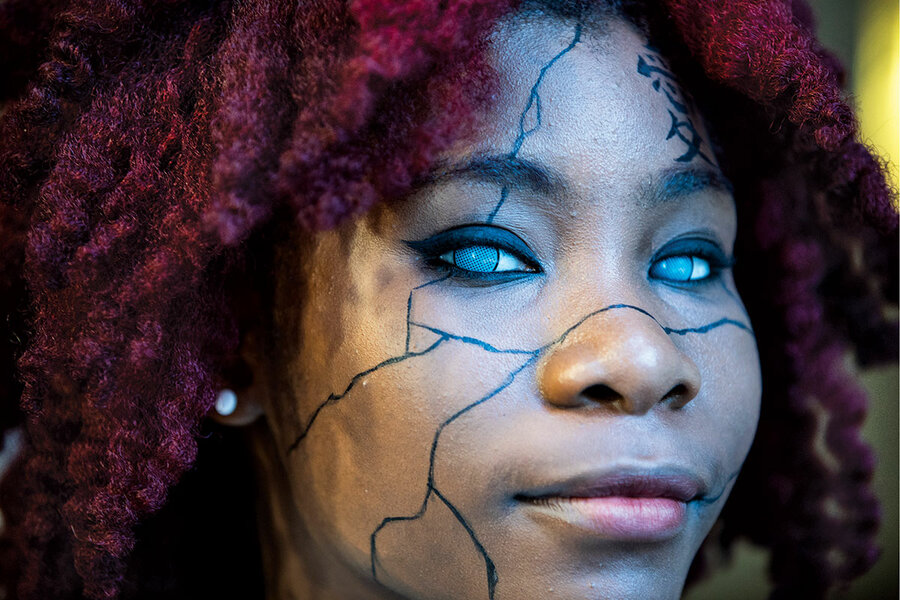In Pictures: Inside the fantastical world of an anime convention
Loading...
| San Antonio, Texas
Welcome to Kawacon, an annual San Antonio convention for anime lovers celebrating the genre and cosplaying (dressing up) as their favorite characters.
The genre originated in Japan, but anime viewership internationally has since overtaken viewership there. Upward of 3 billion people watched in 2021, according to one estimate. Only crime dramas and sitcoms are more popular right now, one analysis found.
Fans at “Kawacon 2023: 2 to Tango!” say they enjoy the hand-drawn animation; they enjoy the long, compelling plots and the complex characters. But as much as anything else, fans say, they enjoy the community.
Why We Wrote This
A story focused onAnime lovers at a convention in San Antonio, Texas, have realized that as much as they enjoy the genre, it’s the community they create that keeps them coming back.
“You meet so many people,” says Lisa Jones. “I’m shy, but when I dress up, I can be more outgoing because I’m this different person.”
Marissa Diaz travels to anime conventions year-round selling prints of anime artwork. She’s gotten to know some other regular congoers, although sometimes she doesn’t recognize them in costume. “There’s no judgment,” she says. “It’s just a nerdy marketplace.”
Like any convention, there’s a schedule of smaller sessions. Because this is an anime convention, the sessions include “How To Get a Dream Anime Body,” a panel on health and fitness; Jeopardy-style trivia game Are You Smarter Than a Shonai?; and a cosplay competition.
Ese Usoro and Isa Florendo are here competing in their first cosplay contest. Ms. Florendo, in a white costume with a white papier-mâché monster fixed to her back (Yuta from “Jujutsu Kaisen”), knows what she did wrong. “I didn’t talk [with the judges] about everything,” she says. “My voice was shaking. I got nervous.”
Ms. Usoro has yet to go in, but her costume is getting lots of compliments outside the judges’ room. Two yoga balls, covered in papier-mâché, are strapped to her back. Her hair is dyed red. She’s wearing electric blue contact lenses.
Their characters, like pretty much every character in anime, deal with trauma. A globally traumatic few years may be a factor in anime’s recent surge in popularity, but Ms. Usoro has her own reasons. “It’s escapism, for me. ... [It] lets you get out of the world you’re in,” she says.
“One, it tests your creative skills,” she adds. “Two, it’s just fun.”













